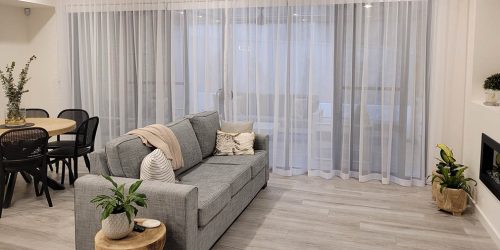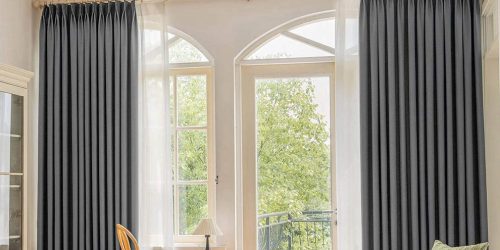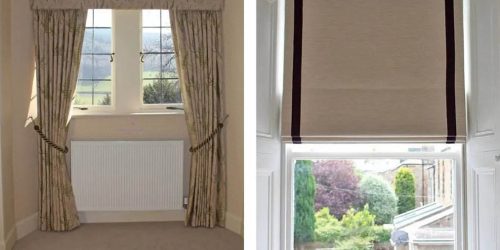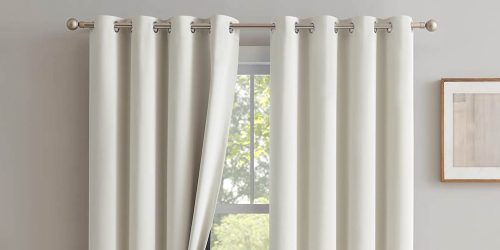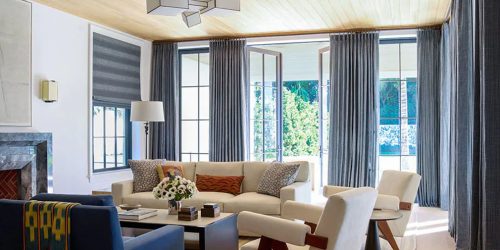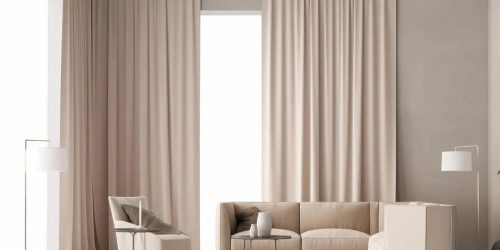Curtains and Window Frames: How to Make Your Windows More Aesthetic
When it comes to interior design, one of the most impactful yet often overlooked elements is the window. The way a window is framed and dressed can significantly influence the overall aesthetic of a room. While many focus on choosing the right furniture or color palette, the windows, with their unique ability to allow natural light into a space, are an important factor in shaping the mood and style of a room. One key aspect of window design is the pairing of curtains and window frames. How these two elements work together can elevate the look of your home. In this article, we will explore how to harmonize curtains with window frames to enhance the visual appeal of any room.
1. Choosing the Right Curtain Style for Your Window Frame
The first step in creating a seamless look is selecting curtains that complement the window frame style. There are various types of window frames, such as wooden, aluminum, or uPVC, each of which brings a different vibe to the room. To achieve harmony, it’s important to choose curtains that align with the material and style of the window frame.
- Wooden Frames: Wooden window frames bring warmth and texture to a room. They pair beautifully with soft, natural fabric curtains like linen or cotton. These fabrics enhance the rustic or organic feel that wooden frames create. Opt for earthy tones such as beige, cream, or muted greens to keep the look cohesive. Additionally, wooden frames often look stunning with classic styles like pleated or Roman curtains that add a touch of elegance without overpowering the natural charm of the wood.
- Aluminum or Steel Frames: Modern aluminum or steel frames, with their sleek and industrial appeal, require a more contemporary approach to curtain choice. Heavy fabrics like velvet or silk can create a striking contrast, while still allowing the windows to be the focal point. For a more minimalist approach, consider sheer curtains in neutral shades. The transparency of sheer fabric will let in natural light while highlighting the clean lines of the metal frames.
- uPVC Frames: uPVC frames are commonly found in more modern homes and offer a sleek, uniform appearance. These frames look best when paired with simple, understated curtains. Light, airy curtains in pastel colors or white can bring a fresh, clean look to a space without distracting from the sleek design of the frame.
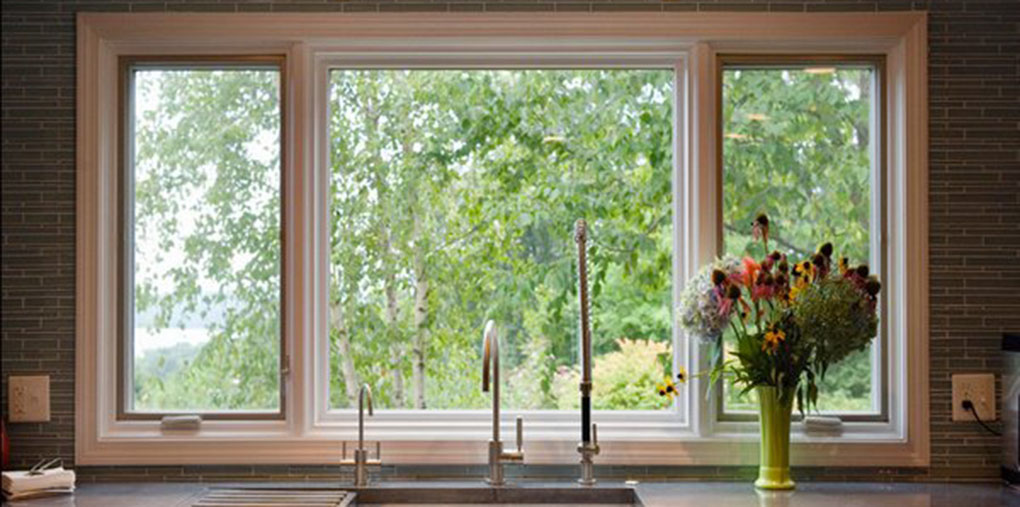
2. Consider the Color Palette
When selecting curtains, the color should complement or contrast well with the window frame. The color of the frame sets the tone for the entire window area, and your curtains can either enhance or provide contrast to this tone.
- Matching Colors: For a seamless, cohesive look, you can match the color of the curtains with that of the window frame. This works especially well with neutral or monochromatic frames. For example, if you have white or black window frames, matching white or black curtains can create a very sleek and streamlined appearance.
- Contrasting Colors: If you want to create a bold statement, consider using curtains that contrast with the color of the window frame. For example, if your window frames are a warm wood tone, you could choose rich, dark curtains like navy blue or deep burgundy for a dramatic effect. Similarly, if you have a gray window frame, you might opt for brighter hues like mustard yellow or emerald green to add vibrancy to the room.
- Soft, Complementary Tones: Another option is choosing curtains in a soft complementary color to the frame. For example, soft pastels or muted tones like dusty pink or sage green can pair wonderfully with wooden frames. The idea is to keep the overall aesthetic relaxed and calming.
3. Length and Height of the Curtains
The length and height of your curtains can also significantly influence the perception of the window and the space as a whole. A few simple rules to follow when it comes to curtain length and height:
- High-Hanging Curtains: Hanging curtains higher than the actual window frame can create the illusion of taller windows and a more spacious room. This technique is especially useful in smaller rooms or spaces with low ceilings, as it draws the eye upwards and gives the room a more open feel. Consider mounting curtain rods closer to the ceiling, just above the window frame, for an elegant look.
- Floor-Length Curtains: For a more classic and formal look, floor-length curtains that just graze the floor are a great option. These curtains work well with both traditional and modern window frames, offering a polished appearance that adds sophistication to the room. This style also works well in larger rooms with high ceilings, giving the space a grand, luxurious vibe.
- Short Curtains: For kitchens, bathrooms, or spaces where you may not want full-length curtains, short curtains that hang just below the window frame can be a charming, practical choice. They add a touch of softness without overwhelming the space. For example, cafe-style curtains can look adorable with wooden frames, especially in smaller spaces like a cozy kitchen nook.
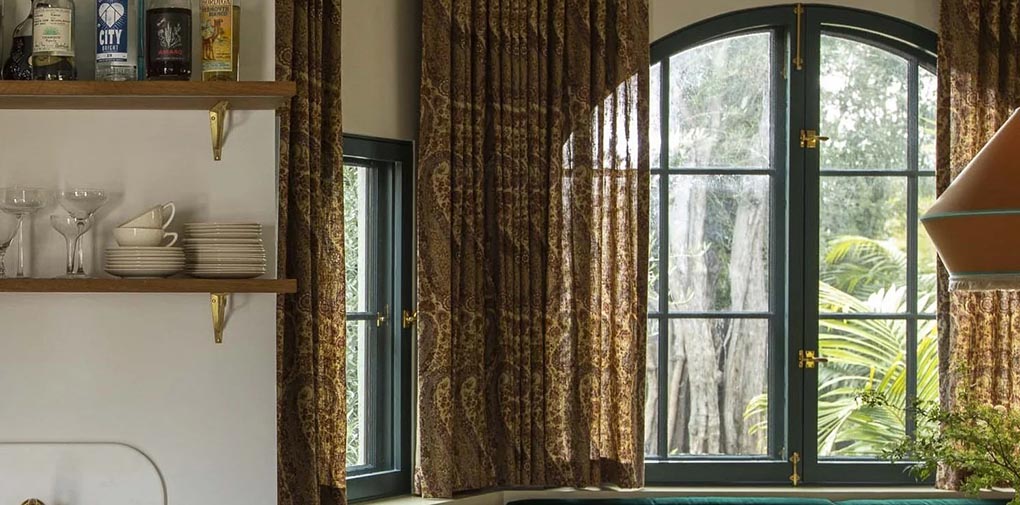
4. The Importance of Texture and Fabric Choice
The texture of the curtains is just as important as the color when it comes to complementing your window frame. The right fabric can enhance the window frame’s features and contribute to the overall ambiance of the room.
- Heavy Fabrics: Velvet, brocade, and other heavy fabrics pair well with sturdy window frames, such as wooden or metal. These fabrics add a luxurious feel, perfect for rooms that aim for a more formal or opulent look. Heavy curtains can also serve as insulation, keeping rooms warm in winter and cool in summer.
- Light Fabrics: Linen, cotton, and silk are great for a lighter, more breezy vibe. These materials allow light to filter through, creating a softer, more relaxed atmosphere. Light curtains work well with modern frames, particularly when trying to balance out a minimalist or Scandinavian-inspired interior.
- Sheer Fabrics: For those looking to let in as much natural light as possible while still having the privacy curtains offer, sheer fabrics are the best choice. Sheer curtains can be paired with any type of window frame and are perfect for creating a soft, ethereal look that doesn’t block out light.
5. Adding Finishing Touches: Curtain Rods and Accessories
Curtain rods and accessories play a critical role in tying together the look of your window treatment. The hardware should match or complement the window frame to create a cohesive design.
- Match the Frame: If your window frame is wooden, opt for a wooden curtain rod to maintain the natural aesthetic. Similarly, if your frame is metal, choose a sleek, modern rod that matches the frame’s material and color.
- Decorative Touches: Curtain tiebacks or tassels can add an extra layer of style to your window dressing. These should also be chosen in accordance with the overall style of the frame and curtains. For example, classic wooden frames might benefit from elegant fabric tiebacks, while more industrial metal frames could look striking with simple leather or metallic tiebacks.
The combination of curtains and window frames is essential in setting the tone of any room. By paying attention to the materials, colors, textures, and length of your curtains, you can create a harmonious look that highlights your window frames and enhances the overall aesthetic of your interior. Whether you prefer a modern, minimalist style or a more classic, luxurious ambiance, the right pairing of curtains and window frames can make all the difference in creating a beautiful, inviting space.
By carefully considering how curtains and window frames interact, you can ensure your windows are more than just functional—they can become a statement piece that adds depth, elegance, and character to your home.
